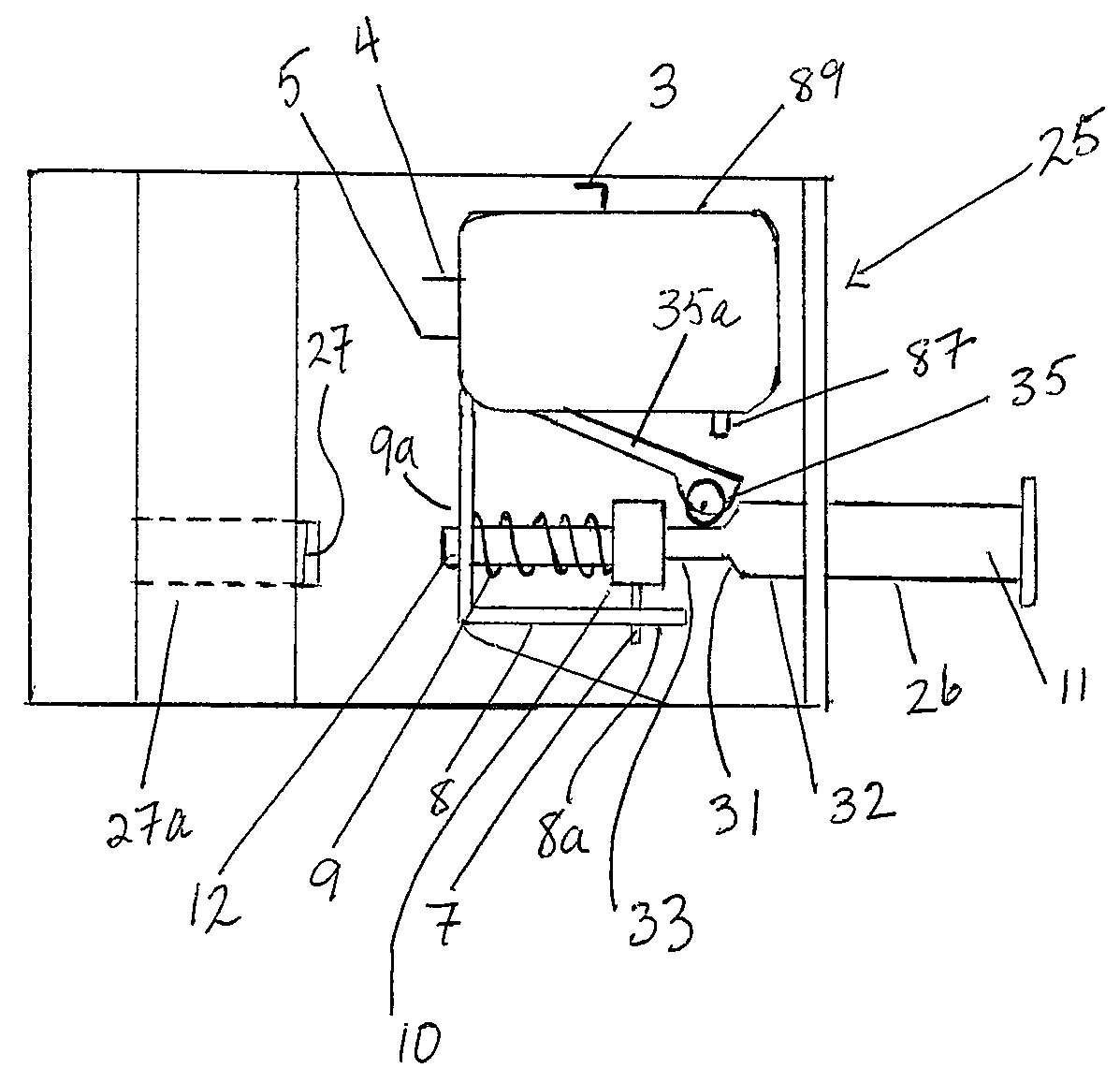Transmission brake disengagement switch and method of operation
a technology of disengagement switch and transmission brake, which is applied in the direction of brake action initiation, gearing control, braking system, etc., can solve the problem of the amount of delay of a conventional switch
- Summary
- Abstract
- Description
- Claims
- Application Information
AI Technical Summary
Benefits of technology
Problems solved by technology
Method used
Image
Examples
first embodiment
[0085]As in the first embodiment, the driver has the option of depressing the plunger even further before release of the same in order to move the pin 7 past the final cam position 83 toward the end of the guide slot, thereby increasing the delay time from manual release of the plunger to the disengagement of the transmission brake.
[0086]Of note, in order to maintain a clean on-off transition of the transmissions brake through movement of the roller 35 from flat 39 to flat 33, the detent 37 spans less than 360 degrees of the plunger 266 circumference or outer diameter (OD) so as to be engaged by roller 35 in the angular position of the plunger corresponding to positioning of pin 7 at cam portion 84, but not be engaged by roller in the angular position of the plunger corresponding to positioning of pin 7 at cam portion 83 and beyond. Thereby the detent 37 would be avoided on release due to rotation of plunger 266 on axis 29 dictated by alignment pin 7 and guide slot 87. Also of note ...
second embodiment
[0088]Another example of use of the second embodiment plunger is described as follows with reference to FIGS. 6 to 8 and 10. FIG. 10 illustrates a control circuit similar to that of FIG. 9, but adding a double pole switch 100 having a double throw pole 100a inserted between the microswitch 89 and the front wheel brake-locking solenoid 90 in order to control operation of a pulsed-brake control 102 of the circuit, which is configured for operation of the transmission brake in a pulsing manner. A pulsing relay 104 has its contact terminals wired between one contact of the double throw pole 100a of the switch 100 and a third normally open momentary switch 106. The other terminal on the same pole of the third normally open momentary switch 106 is wired to the transmission brake solenoid. The other contact of the double throw pole 100a of the switch 100 is wired to the front wheel brake-locking solenoid 90, whereby the position of the double throw switch 100 determines whether pin 5 of th...
PUM
 Login to View More
Login to View More Abstract
Description
Claims
Application Information
 Login to View More
Login to View More - R&D Engineer
- R&D Manager
- IP Professional
- Industry Leading Data Capabilities
- Powerful AI technology
- Patent DNA Extraction
Browse by: Latest US Patents, China's latest patents, Technical Efficacy Thesaurus, Application Domain, Technology Topic, Popular Technical Reports.
© 2024 PatSnap. All rights reserved.Legal|Privacy policy|Modern Slavery Act Transparency Statement|Sitemap|About US| Contact US: help@patsnap.com










